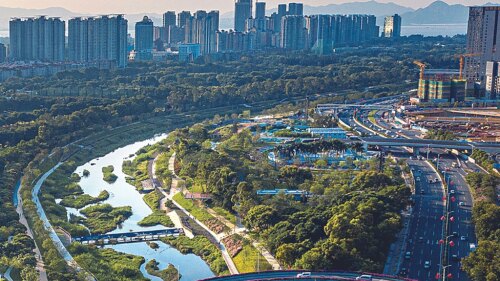Real estate and transportation are increasingly becoming interconnected, Rob Speyer, president and chief executive of Tishman Speyer, told those attending the ULI Asia Pacific Summit in Shanghai.
“The time may be coming when transportation has a greater effect on real estate than interest rates,” he said. “So, move over banks; here comes the bus!”
Speyer emphasized the importance of city leadership in driving public transit initiatives, which will in turn drive real estate values.
“That leadership will have more of an impact on the real estate we own than even developers and architects,” he said. “We need mayors with energy, confidence, and a sense of destiny. Mayors are often in a better position than national leaders to work together and get things done.”
A common obstacle mayors face is traffic and pollution, he said, which will get worse as a predicted 2.5 billion people move to cities between now and 2050.
“We all talk a lot about connectivity; it is about much more than mobile phones and wi-fi. Connectivity is about where we go on the ground and how we get there,” Speyer said. “In the past, sometimes we built transportation after real estate, and sometimes we built it before real estate. But now, finally, we are building transportation and real estate at the same time.”
He used the examples of Shanghai; Los Angeles; Shenzhen, China; and Rio de Janeiro to show how enlightened mayors are using public transit and how that benefits real estate.
“Shanghai isn’t just building; it’s building with a plan for decades ahead,” Speyer said. “It is a city with energy, with confidence, with a sense of destiny—but more so a city with leadership.”
Mayor Yang Xiong and his predecessor, Han Zheng, have overseen an expansion of Shanghai’s subway network that will see it grow to 18 lines and 500 miles (800 km) of track by 2020. Speyer said Shanghai is also focusing real estate development on transit nodes and that Tishman Speyer has located its major developments in the city within walking distance of subway stations.
His second example was Los Angeles, whose mayor, Eric Garcetti, visited Shanghai “to learn how to move more people in less time with fewer cars,” Speyer said.
“Shanghai is where Garcetti came to learn how to cut congestion and the air pollution that has been crushing L.A. for decades. The mayor has plans to build 32 miles [52 km] of subways in L.A. to get the locals out of their cars and into trains. Over the next two decades, L.A. wants to cut car journeys by 1.4 million miles [2.3 million km] a day, which will increase real estate values.”
Shenzhen Mayor Xu Qin has a city of 12 million people, which is set to see a 20 percent increase in population in the medium term. To cope with this, Xu plans to build the longest subway in the word.
State-owned transit company Shenzhen Metro has signed a landmark deal with developer China Vanke in which Vanke has acquired property above ten metro stations in Shenzhen, and Shenzhen Metro has taken a 20 percent stake in Vanke.
“So, Vanke gets prime development land, and Shenzhen Metro gets a share of the profits,” said Speyer. “This is a deal that all of us in this room should learn from. What works for Vanke and Shenzhen Metro could work for all of us.
“Property and transportation will increasingly become a single deal. We have 2.5 billion people moving to cities, and as much as they need somewhere to go, they also need some way to get there.”
Rio de Janeiro Mayor Eduardo da Costa Paes is taking a similar approach to his city’s transit problems, using the 2016 Olympics as a springboard to redesign the city, with bus rapid transit linked to the subway system and a tunnel linking Barra and Santa Cruz to the city’s south with its downtown.
Speyer said his company has invested in the changes made by Paes, noting that Tishman Speyer’s projects in downtown Rio were only viable because of transit improvements “making Rio a smarter and easier place to work.”
“Cars once helped cities grow,” Speyer concluded. “But now they are choking growth, and the 21st century will be about getting cars off the road.”
For the real estate owner, the importance of transit is obvious, he said. “If you own an apartment or office building far from public transit, how can you compete with an apartment block of buildings two blocks from the subway?”




